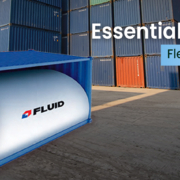Common Misconceptions About Flexitanks and the Truth Behind Them
Flexitanks have transformed the landscape of Bulk Liquid Transport by making it easier and more efficient to ship large volumes of liquid. Yet, several misconceptions continue to cloud the judgment of shippers and logistics managers. Many myths can hinder smart shipping decisions, from concerns about safety and compatibility to questions about cost and sustainability.
As a trusted Flexitank manufacturer in India, Fluid Flexitank is committed to clearing these doubts and promoting awareness of how this technology works. This blog breaks down some of the most common myths and explains the real facts behind them.
Myth 1: Flexitanks are unsafe and prone to breaking
Truth: Modern flexitank systems are built with advanced, multi-layer polyethylene that can withstand high pressures, rough handling, and long shipping journeys. When installed correctly in standard 20-foot containers, flexitanks can safely carry up to 24,000 litres of non-hazardous liquids. Quality manufacturers like Fluid Flexitank follow international safety standards and strictly test puncture resistance and durability. As long as guidelines are followed, flexitanks offer a high level of safety for shipping liquids.
Myth 2: Flexitanks are only suitable for a limited liquid types
Truth: Flexitanks are incredibly versatile. They are used to transport a wide range of food-grade liquids like edible oils, fruit juice, and wine, as well as non-hazardous industrial liquids like glycerine, lubricants, and latex. While it’s true that they aren’t suitable for hazardous materials, flexitanks have evolved to support various industries. Today, there are specialty options with thermal liners or aseptic barriers for sensitive products. A reliable Flexitank manufacturer in India can guide clients on selecting the right Flexitank for specific liquids.
Myth 3: Single-use flexitanks are bad for the environment
Truth: Although designed for one-time use to prevent contamination, most flexitanks are now made from 100% recyclable polyethylene. They often replace traditional packaging methods like drums or IBCs that generate more waste and require extensive cleaning. With a proper recycling program, flexitanks can significantly reduce the overall carbon footprint of bulk shipping. Fluid Flexitank supports responsible disposal and recycling practices to ensure that its products contribute positively to environmental sustainability.
Myth 4: Flexitanks are more expensive than traditional methods
Truth: Flexitanks may have an upfront cost, but the overall logistics savings make them a cost-effective solution. One flexi tank can replace multiple drums or IBCs, allowing shippers to move more liquid per container. This reduces freight costs, handling time, and labour expenses. Loading and unloading are faster, and there are no cleaning or return logistics involved. When calculated over the full shipping cycle, flexitanks often deliver significant cost savings.
Myth 5: Overfilling or underfilling doesn’t matter much
Truth: Proper filling is essential. Overfilling a flexitank can increase internal pressure and cause rupture or leakage. Underfilling creates empty space, leading to a liquid surge, which can destabilize the container during transport. Both scenarios can cause product loss, container damage, or transit delays. That’s why reputable manufacturers like Fluid Flexitank provide clear loading instructions and even offer supervision during filling to ensure optimal usage.
Misconceptions about flexitanks often stem from outdated information or improper usage. When chosen and used correctly, flexitanks provide a safe, versatile, and economical method for Bulk Liquid Transport. With advancements in technology, materials, and recycling options, flexitanks are now a reliable solution trusted by industries worldwide.
As a leading Flexitank manufacturer in India, Fluid Flexitank brings proven expertise, strict quality assurance, and global shipping support to clients. The key to successful liquid transport lies in working with the right partner, one that not only delivers high-quality products but also educates and supports your logistics goals.
FAQ
Q1. Can I reuse a flexitank for multiple shipments?
A: No. Flexitanks are designed for single use to ensure hygiene and avoid cross-contamination.
Q2. What liquids can be transported using flexitanks?
A: Flexitanks can carry non-hazardous liquids, including edible oils, juices, syrups, lubricants, and some chemical solutions.
Q3. Is a flexitank more cost-effective than ISO tanks?
A: Yes, especially for one-way shipments. Flexitanks eliminate return logistics and offer higher container utilization.
Q4. How do I dispose of a used flexitank?
A: Used flexitanks can be recycled. Many suppliers offer disposal or recycling programs.










